While it wasn’t a big show, there was some quality at this year’s California Audio Show that’s worthy of mentioning. This is the first of two show reports from me on the good stuff. And, again, thanks to the exhibitors that support this show.
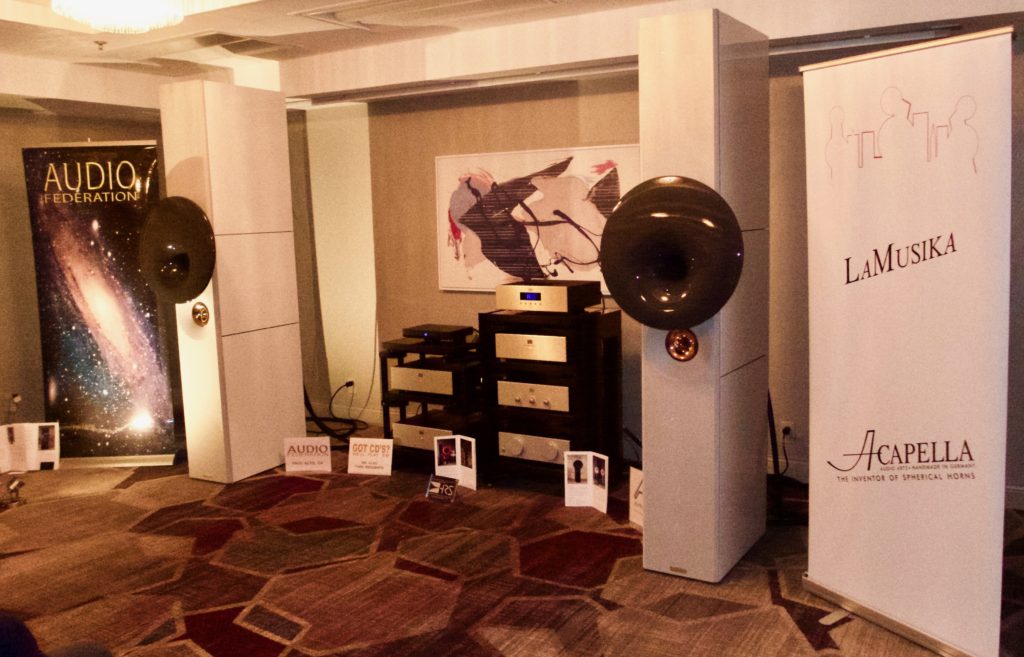
The Audio Federation Room
At the last few shows, I have been very impressed by the Audio Federation room’s combination of the Acapella Audio Arts speakers and amplification with a front end from Audio Note. This was true again at this show, and even though the speakers aren’t at the top of the Acapella line, this was still a dream system.
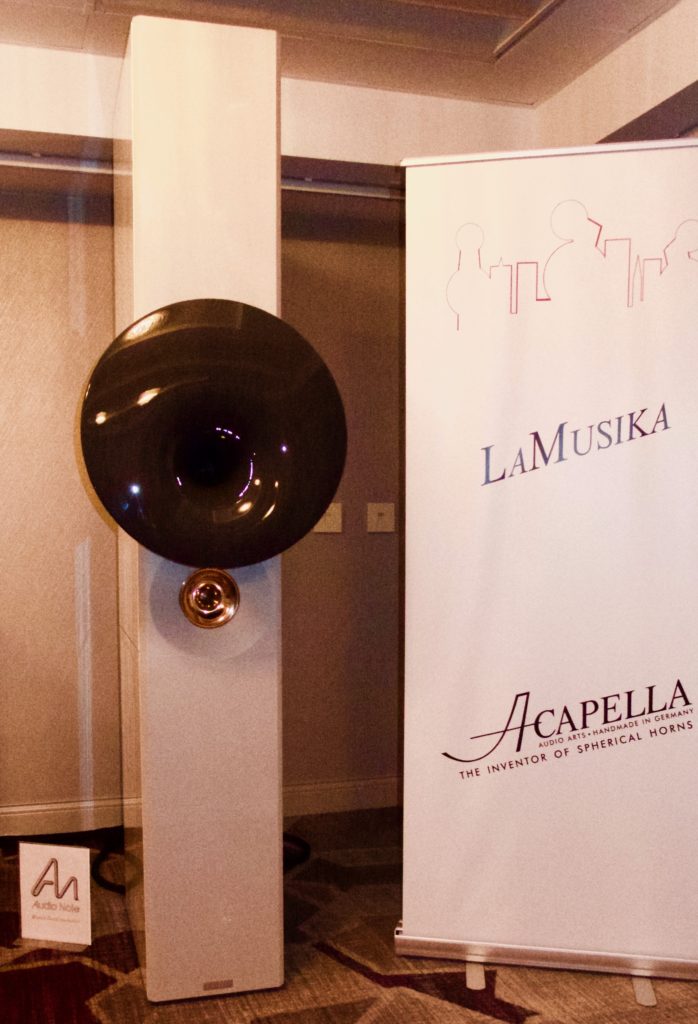 This was the US debut of the Acapella Audio Arts Campanile 2 plasma/horn loudspeakers ($81,700) driven by their LaMusika integrated amplifier at $109,600. The source was the Audio Note CDT Five transport for $52,000 and their brand new Fifth Element DAC for $147,850. Everything was sitting on an HRS SXR equipment stand with M3x Isolation Bases as seen in the top picture. The stand is $18,330.
This was the US debut of the Acapella Audio Arts Campanile 2 plasma/horn loudspeakers ($81,700) driven by their LaMusika integrated amplifier at $109,600. The source was the Audio Note CDT Five transport for $52,000 and their brand new Fifth Element DAC for $147,850. Everything was sitting on an HRS SXR equipment stand with M3x Isolation Bases as seen in the top picture. The stand is $18,330.
I listened to this system on both Friday and Sunday, and it sounded very good. As was the case for past shows, their room was crowded with people who really wanted to hear this system.
This was a great room to visit! The sound was very alive sounding with great scale and an exceptional soundstage. I heard classical music, classic rock, punk, bluegrass and even some beautiful Asian music.
The system had great dynamics with realistic bass and a very transparent sound, Best of all, this was a system that sounded like music, and I could and did listen for long periods of time.
One of the complaints that I heard at the show was how many vendors couldn’t or wouldn’t play the music they had brought. This certainly wasn’t the case in this room. On both days, I saw people hand the room hosts CDs, and they played several songs from these CDs as requested.
The Margules Group Room
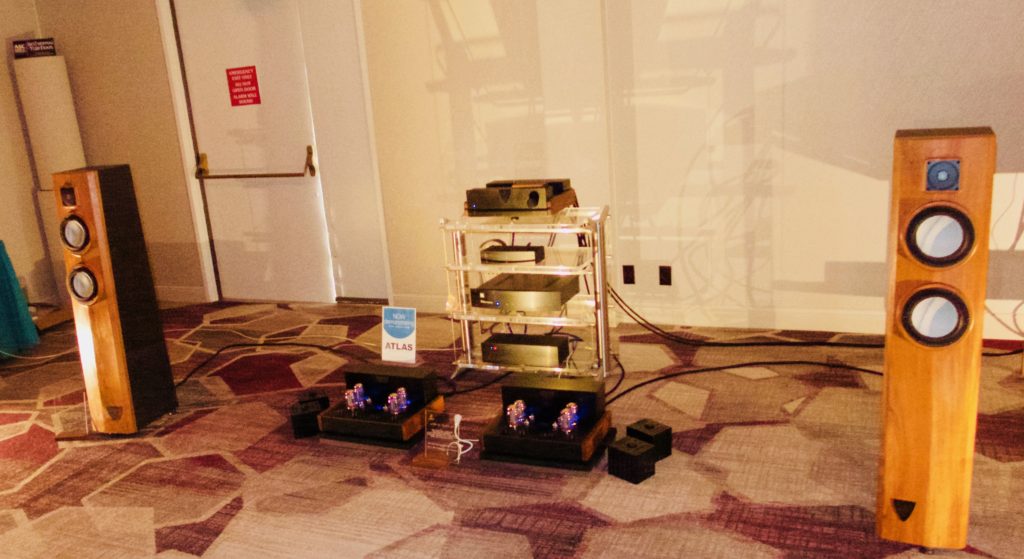
Julian Margules of the Margules Group has been an audio manufacturer for over 40 years and is well known in Mexico and other parts of the world. They are located in Mexico City, and their products are manufactured there. You will never meet a nicer gentleman than Julian. He works in a university setting, so his products are in a continuous state of being improved.
At this show, the system consisted of the newest versions of their Margules U280-sc Black 1.3 Tube Class A Stereo/Mono Amplifiers, Margules SF220 Black 1.2 Tube Class A Preamplifier, Margules Orpheus 1.3 Ceramic Driver Tower Speakers, Magenta TT-10 Turntable, Magenta FZ47db Phono Stage, Magenta BTV4 Wireless Receiver and the Magenta DAC.
When visiting with other people at the show, I discovered I wasn’t the only person considering this room for the best system at the show. On Sunday afternoon, I was back in this room listening to the system one final time, and it was then that I discover that the entire system sans cables only cost $45,000. I was simply blown away. How could this system sound so good when some of the other systems had single components that cost more than this entire system?
The TriAngle Art and Angel City Audio Room
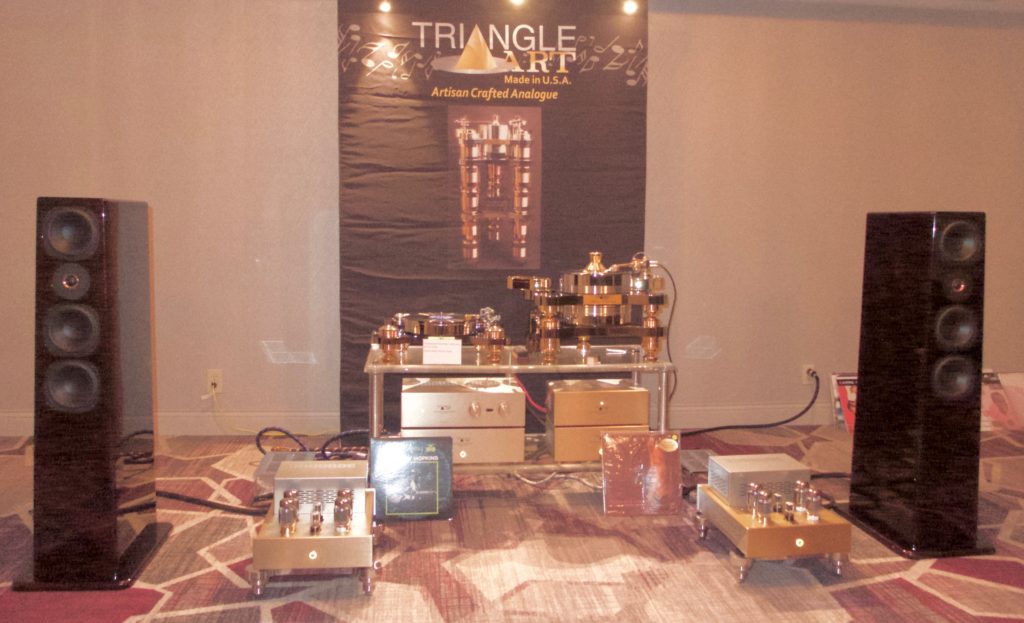
I couldn’t believe that three of the very best rooms at the show were all next to one another. I wasn’t sure what to expect when I went into this room since I wasn’t familiar with the Angel City Audio Seraphim Prime speakers ($25,000/pair). The only speakers of theirs that I had heard previously were a small stand-mounted speaker driven by Melody amps.
The Seraphim Prime is their top of the line speaker, and it is a three-way that stands four feet tall. With the TriAngle Art gear, this speaker sounded incredibly musical, The soundstage was huge, but most all it had great harmonics and let me hear into the layers of a musical performance.
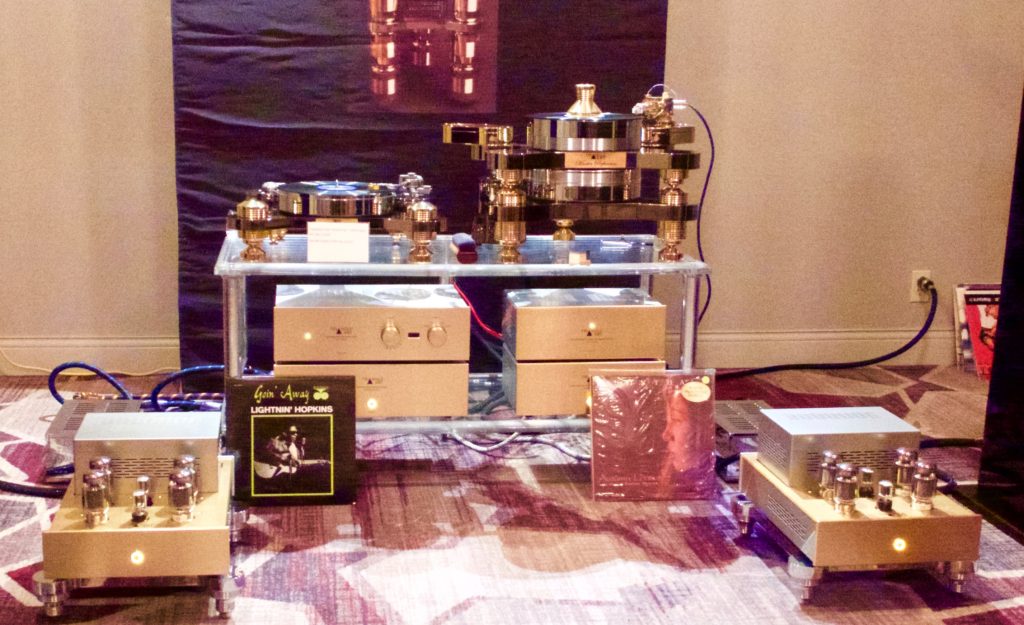
TriangleArt was using two Apollo moving-coil cartridges ($8,000 each) mounted on TriangleArt Osiris II tonearms ($6,800 each). The two turntables were the TriangleArt Maestro turntable ($7,500) that I reviewed earlier this year and a TriangleArt Master Reference turntable system ($39,999).
The electronics were the TriangleArt Reference Tube Phono stage ($12,999) and the TriangleArt Reference Tube preamp ($18,999). When I was in the room, they were using the TriangleArt Reference tube monoblocks ($18,998/pair). I was lucky enough to bring these home for a review, so stay tuned for that. The cables were the TriangleArt Rhea Reference cable system. I continue to be impressed with the TriangleArt electronics at each show i go to, so I’m really excited to have a chance to review them.
